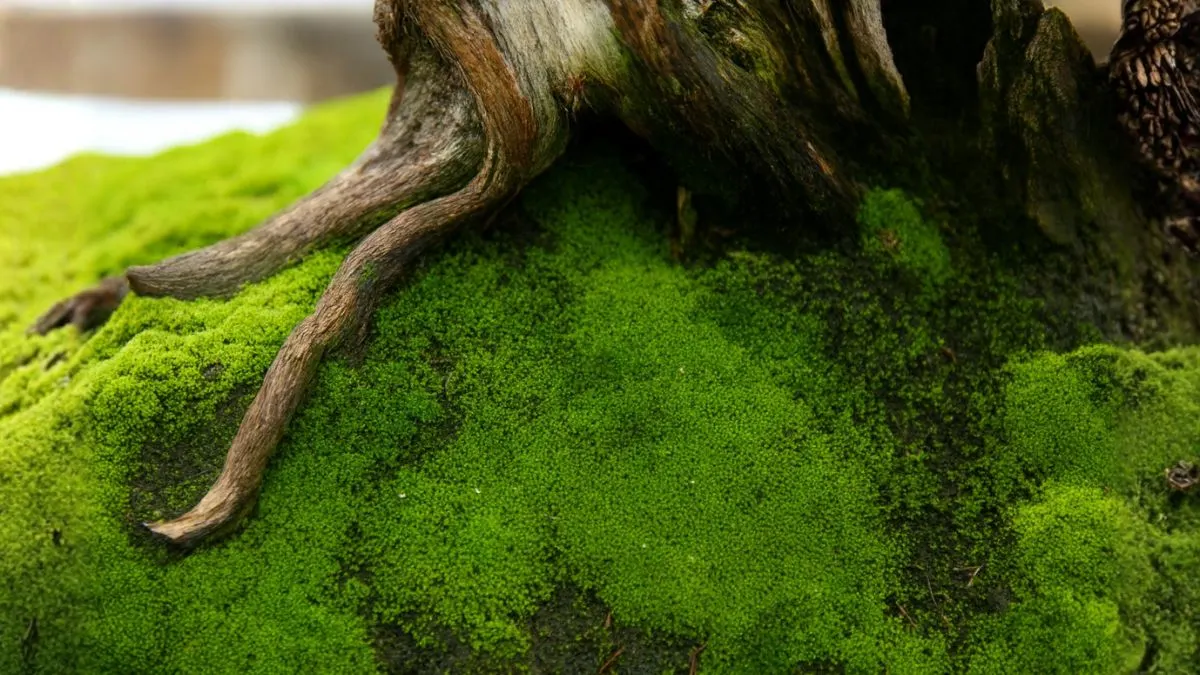Moss has fascinated gardeners, artists, and nature lovers for centuries. Soft, green, and resilient, moss brings life to places where other plants struggle to grow. Whether it’s covering rocks, fallen logs, or living trees, or peeking through cracks in old pavement and driveways, moss thrives in unexpected spots. If you’ve ever wondered where to find moss and how to use it creatively in your garden or home, this guide takes you through the process of collecting moss, its natural habitats, and modern uses, including preserved moss.
Where to Find Moss in Nature

1. Shady, Moist Environments
Moss loves damp, low-light conditions. You’ll often find it:
- In shady, moist environments such as forests, yards, and even cracks in pavement.
- Growing on rocks, fallen logs, or living trees where moisture lingers.
- Alongside streams, waterfalls, and wetlands where humidity is high.
Personal Note: On my forest hikes in Canada, I often see moss creating soft carpets along tree trunks and pathways. It’s magical how it thrives where flowers and grasses fail.
2. In Your Backyard
You don’t always need a forest adventure. Moss can grow in shady, moist areas in the backyard.
- Look near fences, under trees, or beside a shed where sunlight is limited.
- Moss loves compact soil, so areas where grass won’t grow often host moss naturally.
Tip: Instead of removing it, you can cultivate backyard moss into a small moss garden or terrarium.
Also Read: Kunda Jasmine: The Fragrant White Flower That Attracts Positivity
3. Unexpected Places
Sometimes moss surprises you by appearing in everyday urban settings:
- Parking lots, driveways, or a nearby forest edge.
- Between bricks or cracks in concrete where moisture collects.
- On old garden pots or stone walls, giving them a rustic, aged look.
How to Collect Moss ️
Harvesting Techniques
Mosses can be harvested by scooping, scraping, or raking. But remember to collect responsibly:
- Scooping: Use a spatula or trowel to scoop moss from soil.
- Scraping: For moss on stones or wood, scrape gently with a flat tool.
- Raking: Lightly rake moss in shaded lawns where it spreads naturally.
⚠️ Always collect in moderation, leaving enough behind to allow regrowth.
Preserved Moss
Another option is preserved moss, which is real moss that has undergone a specialized preservation process.
- It retains its natural look and texture.
- Unlike live moss, it requires no water or sunlight.
- Often used in wall art, interior décor, and landscaping.
Preserved moss is popular in the USA and Canada for low-maintenance green walls and eco-friendly interior design.
Also Read: Bright, Bold, and Bee-Friendly: Why the Lollipop Plant Belongs in Your Yard
Creative Uses of Moss
1. Garden Design
Moss adds softness and charm to gardens:
- Line pathways with moss for a fairy-tale effect.
- Use moss to cover bonsai soil or decorate shady corners.
- Moss lawns are eco-friendly alternatives to grass, requiring little care.
2. Indoor Décor
With preserved moss, you can bring greenery indoors without worrying about care.
- Moss wall art panels add freshness to homes and offices.
- Small moss terrariums are great desk companions.
- Combine moss with succulents for stylish centerpieces.
3. Environmental Benefits
Moss isn’t just pretty—it’s powerful:
- Absorbs pollutants and improves air quality.
- Retains soil moisture and prevents erosion.
- Provides shelter for tiny insects and supports biodiversity.
Also Read: Periwinkle Plant: The Easiest Blooming Beauty
Live Moss vs. Preserved Moss
Feature |
Live Moss |
Preserved Moss |
Care Needed |
Needs shade, moisture, and air |
No care required |
Longevity |
Seasonal, depends on environment |
Long-lasting, years with no upkeep |
Best For |
Gardens, landscapes, terrariums |
Wall décor, art, indoor decoration |
Eco Value |
Supports biodiversity & soil health |
Aesthetic only, not living |
Personal Experience
When I moved into a house with a shaded backyard, grass refused to grow under the maple trees. Instead of fighting nature, I encouraged moss to spread. Within a season, I had a lush green carpet that needed no mowing or fertilizer. Later, I used preserved moss for an indoor wall feature—bringing the same forest vibe inside my living room.
Moss is one of nature’s most versatile gifts. Found in shady, moist environments such as forests, yards, and even cracks in pavement, it grows quietly in places we often overlook. And for those who love greenery without the maintenance, preserved moss is a wonderful option.
👉 Next time you’re outdoors, look closely—you might just find moss thriving under your feet, waiting to be collected and cherished.






